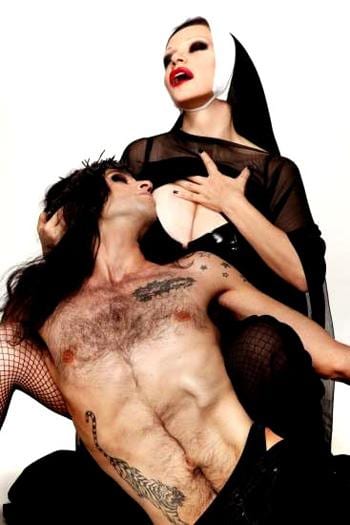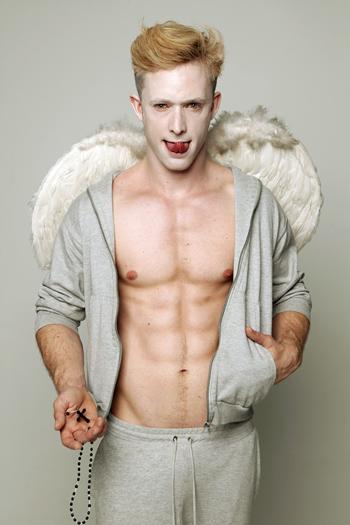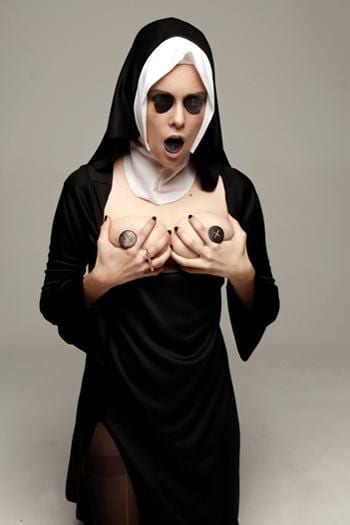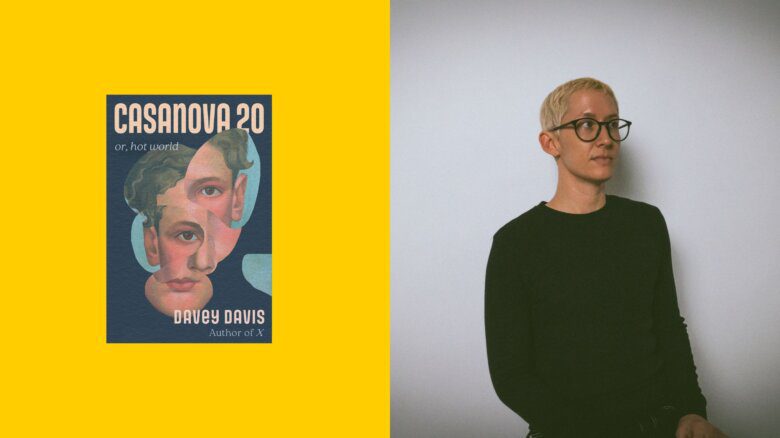The day after Obscenity opened at La Fresh Art Gallery in Madrid, someone smashed the front window of the gallery and tossed in an explosive device.
The bomb failed to go off and no one was injured, but the threat of violence over his religious-themed photography show unsettled Toronto artist Bruce LaBruce enough that he decided to talk about the meaning behind his art, something he rarely does.
“I don’t think an artist should necessarily have to go about justifying his work, but because of the controversy I’ve been kind of pontificating about it,” says LaBruce, on the phone from his Berlin apartment.
Obscenity, which opened Feb 17, is a collection of 50 pictures, which, using religious iconography and symbols, explores themes such as censorship, sexual repression and pop culture. One image depicts a priest wearing red high-heels, lifting up his robe to reveal his junk. Another shows a bare-breasted nun with communion wafers covering her eyes and nipples. Most of the other photos wouldn’t look out of place on billboards or in fashion magazines. LaBruce, whose works have explored gay sexuality using everything from skinhead punks to zombie porn, says the controversy surrounding Obscenity has been surprising.
“For me the works are totally toned down,” he says. “Normally my work is much more pornographic.”
That apparently wasn’t enough to placate his critics. The show has attracted protests from Catholic and conservative groups across Spain, including supporters of former dictator Francisco Franco.
The Francisco Franco Foundation, whose website says it works to “spread knowledge of the figure of Francisco Franco in its human, political and military dimensions, as well as the achievements and projects carried out by his regime,” issued a press release prior to the show’s opening calling LaBruce’s work “a virulent and morbid attack on the Catholic religion.”
On Feb 24, the Eucharistic Ministry, a Catholic group, hosted a demonstration “in defence of our Christian roots and the Catholic faith.” About 50 protesters waved placards and played Christian rock music outside La Fresh.
Spanish conservative group Make Yourself Heard called the project a “blasphemous provocation.”
The models who posed for LaBruce, who include well-known actors and musicians, have faced backlash for their participation. Mario Vaquerizo was allegedly fired from his hosting duties at Catholic church-managed radio station Cadena COPE after he posed with his wife, Spanish singer and gay icon Alaska, in an erotic reinterpretation of the famous Michelangelo sculpture Pieta, in which the Virgin Mary holds the body of Christ.
Alaska’s father was exiled by the Franco regime during the Spanish Civil War. The singer herself was part of La Movida, a progressive artistic movement that flourished in Spain following Franco’s death in 1975.
The legacy of the Franco dictatorship and its relationship with Catholicism continues to be a source of division in Spain — the church in Spain sided with Franco against the Communist-aligned Republicans in the Spanish Civil War — but LaBruce says he doesn’t believe Franco supporters represent mainstream Catholic opinion.
“There are large segments of the Catholic Church that are mortified that the Franco Foundation is acting as its mouthpiece,” he says.
He also argues that his work has many layers of meaning and isn’t meant to be “offensive or sacrilegious.”
“I’m not strictly against religion,” LaBruce says. “I think organized religions in general, especially the big ones, can be repressive at times, but I respect people’s right to express their spirituality in any way they see fit. However, I was born into Christianity and I have the right to make work that . . . raises issues around religious iconography and modern worship.”
The boundary-pushing native of Toronto says Obscenity has Canadian roots. LaBruce says he chose the name after Canadian border agents confiscated a number of his photographic negatives last year, citing Canadian laws against importing obscene materials.
The exhibit will be on display until the end of March at La Fresh. LaBruce says he has no plans to showcase the artwork anywhere else after that.
“Taking it to another Catholic country could be dangerous, now that everybody knows about it,” he says.
Below is a video interview Xtra did with Bruce LaBruce when his film LA Zombie came out.



 Why you can trust Xtra
Why you can trust Xtra


